Abstract
Five-year-old children were taught three-stage sequences of arbitrary matching: A-C, B-C, A-D; A-C, B-D, B-C; or A-C, A-D, B-C. Each stage refers to a sample-comparison relation between stimuli. Unreinforced test probes revealed untrained arbitrary matches (B-D, A-D, and B-D, respectively), derivable by substitution of stimuli with a common sample or comparison function. Additional probes revealed further untrained sample-comparison relations derivable by substitution and identity, including the commuted relations D-B, D-A, and D-B, respectively. These processes may have relevance to conceptual and verbal behavior.
Keywords: stimulus control, arbitrary matching to sample, derived stimulus relations, stimulus equivalence, stimulus classes, substitutability, language, children
Full text
PDF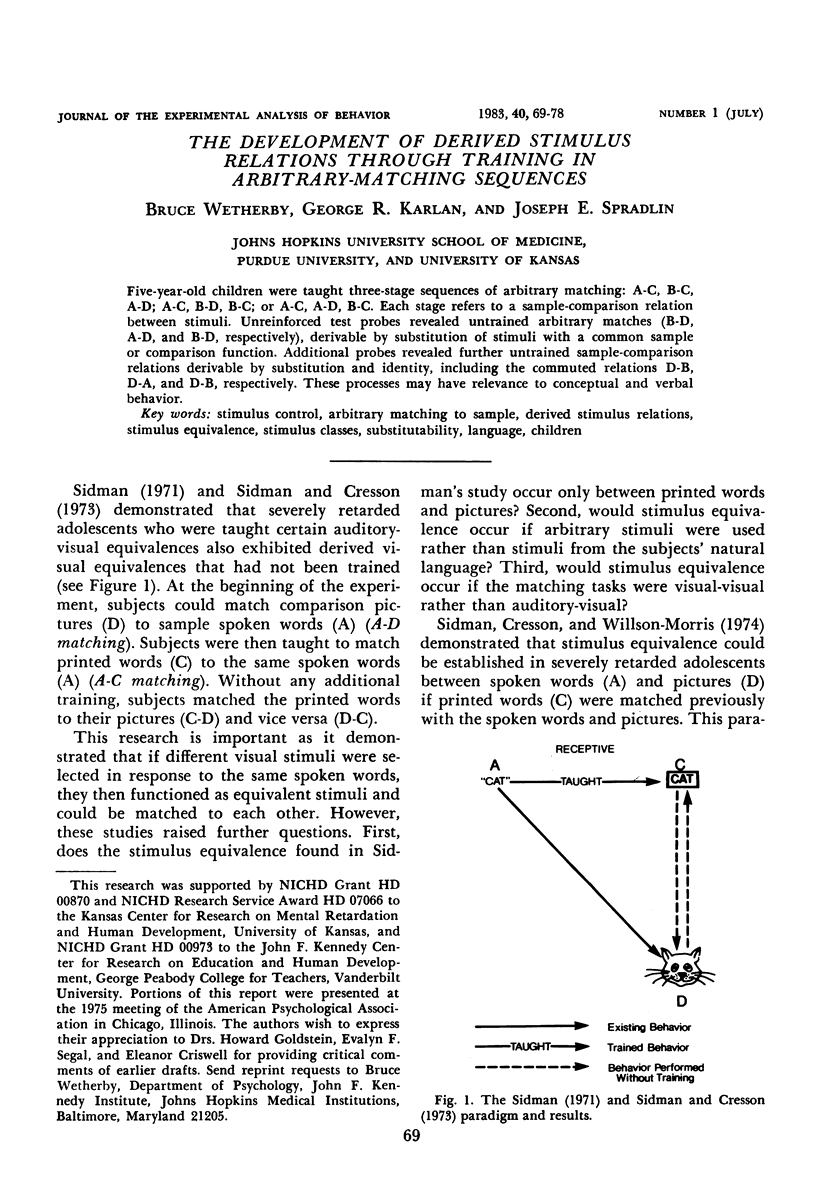
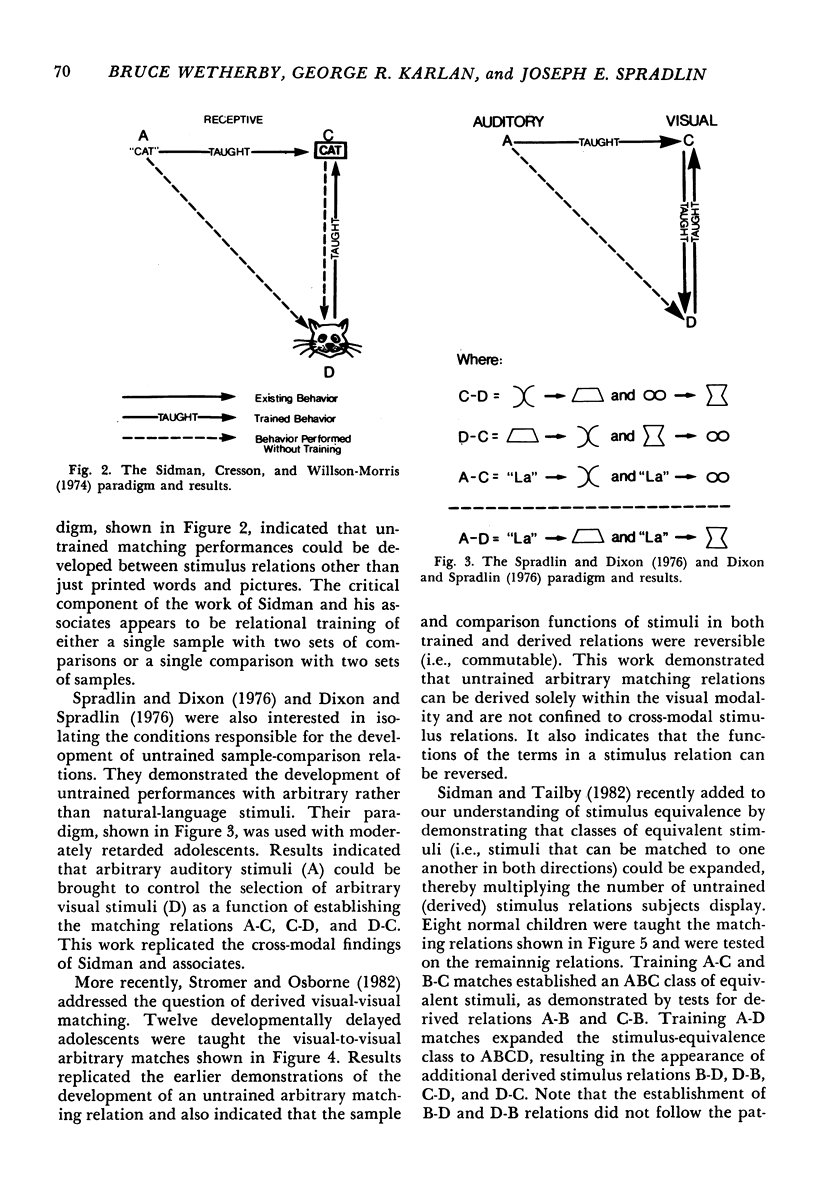
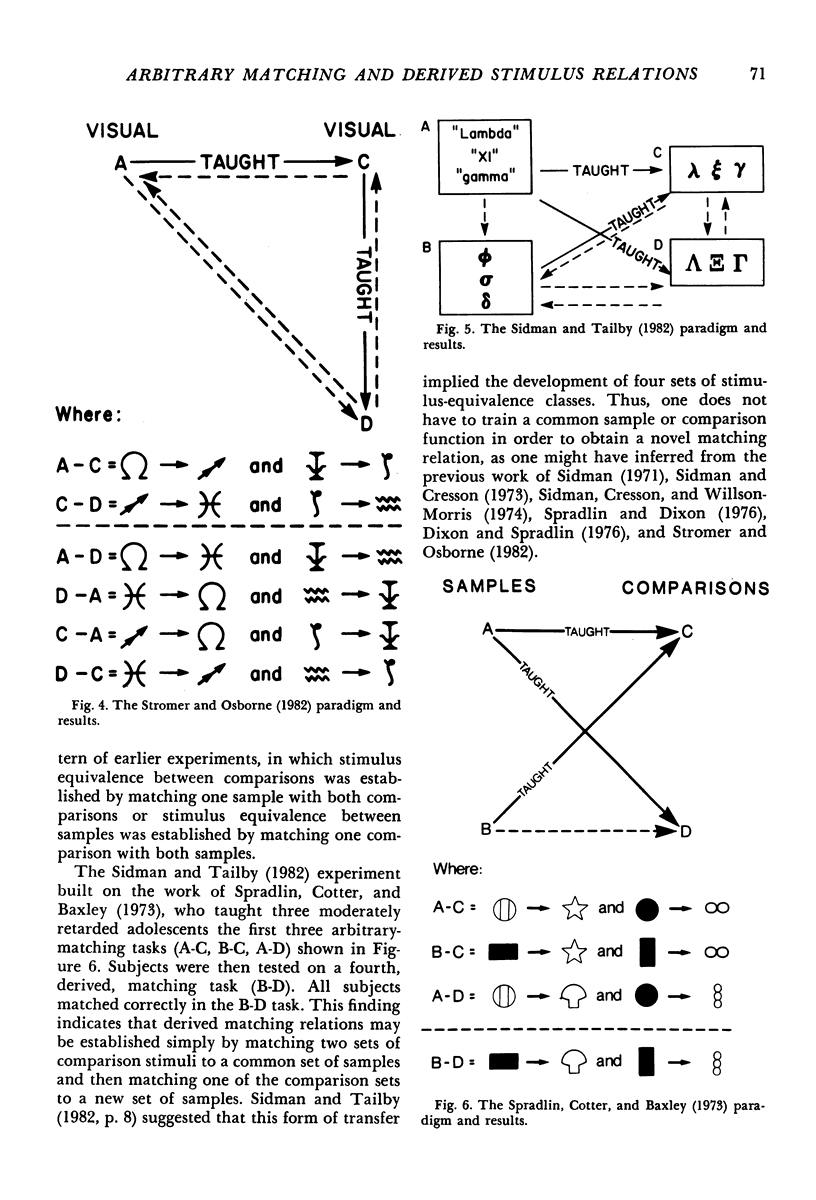
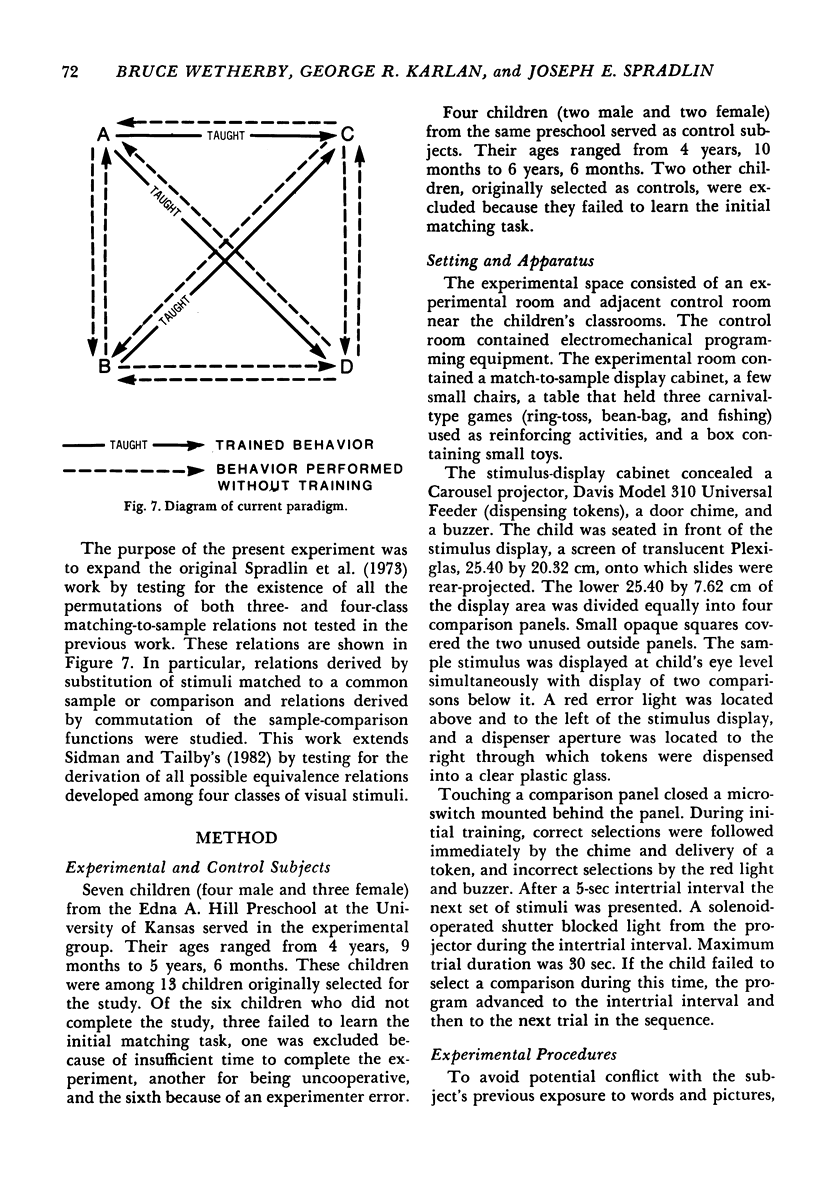
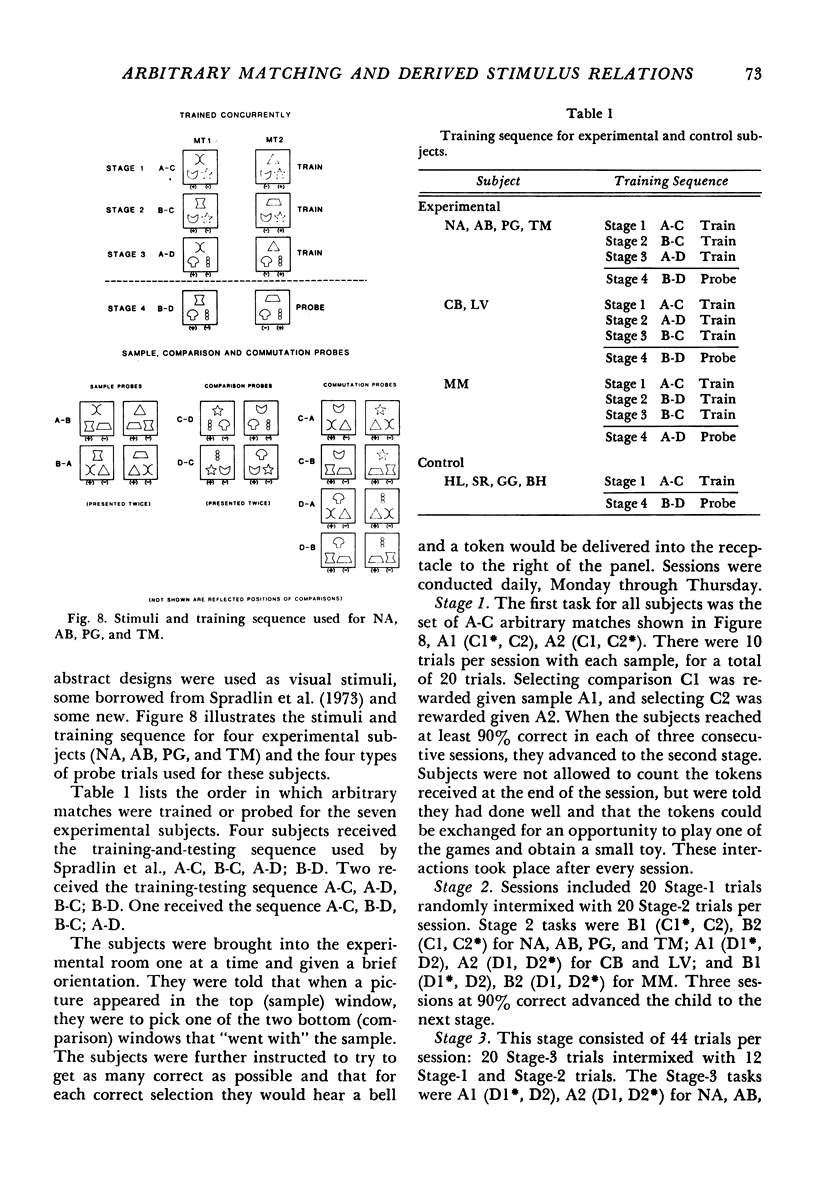
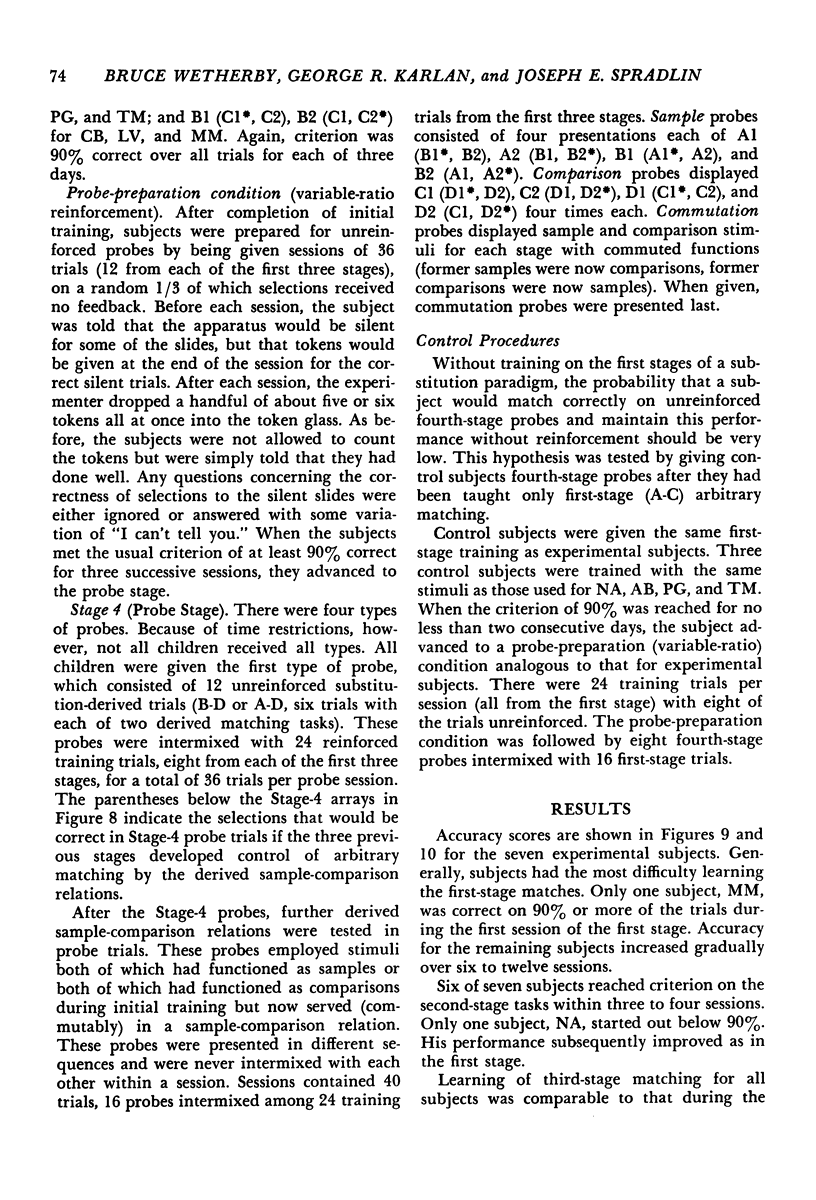
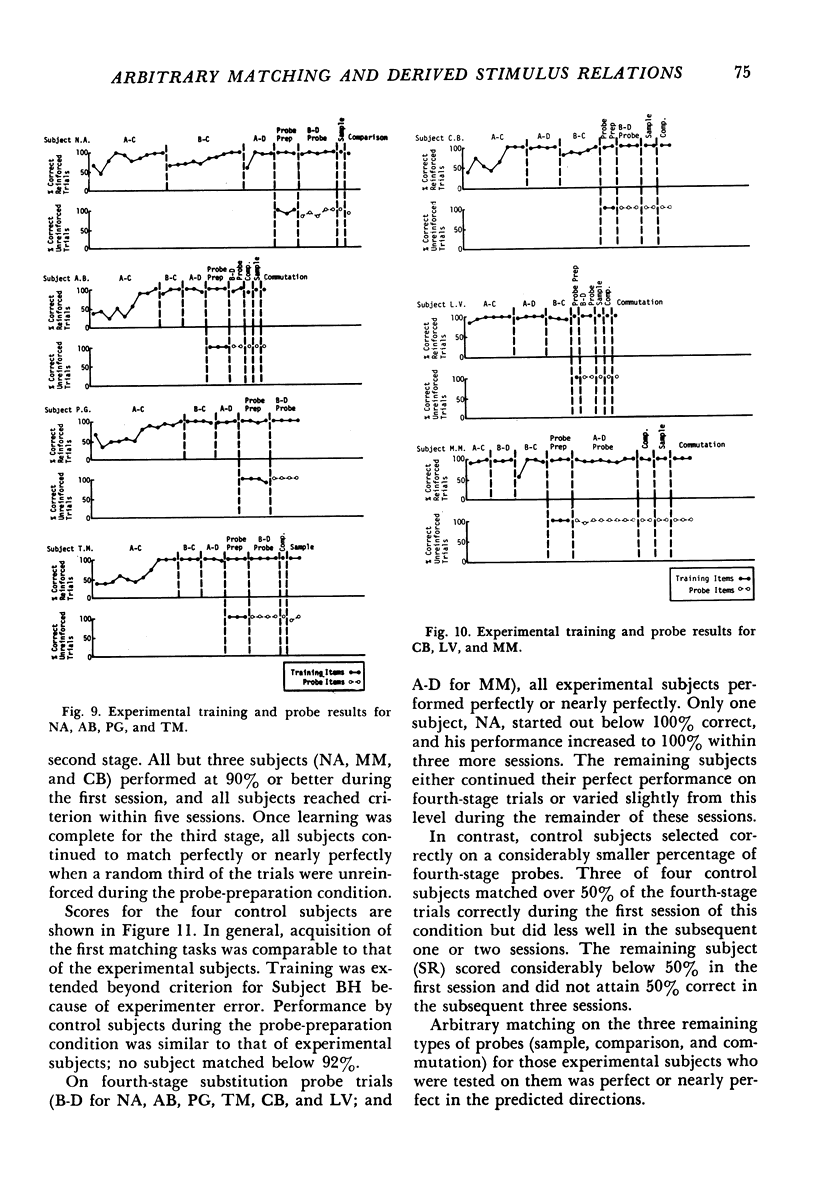
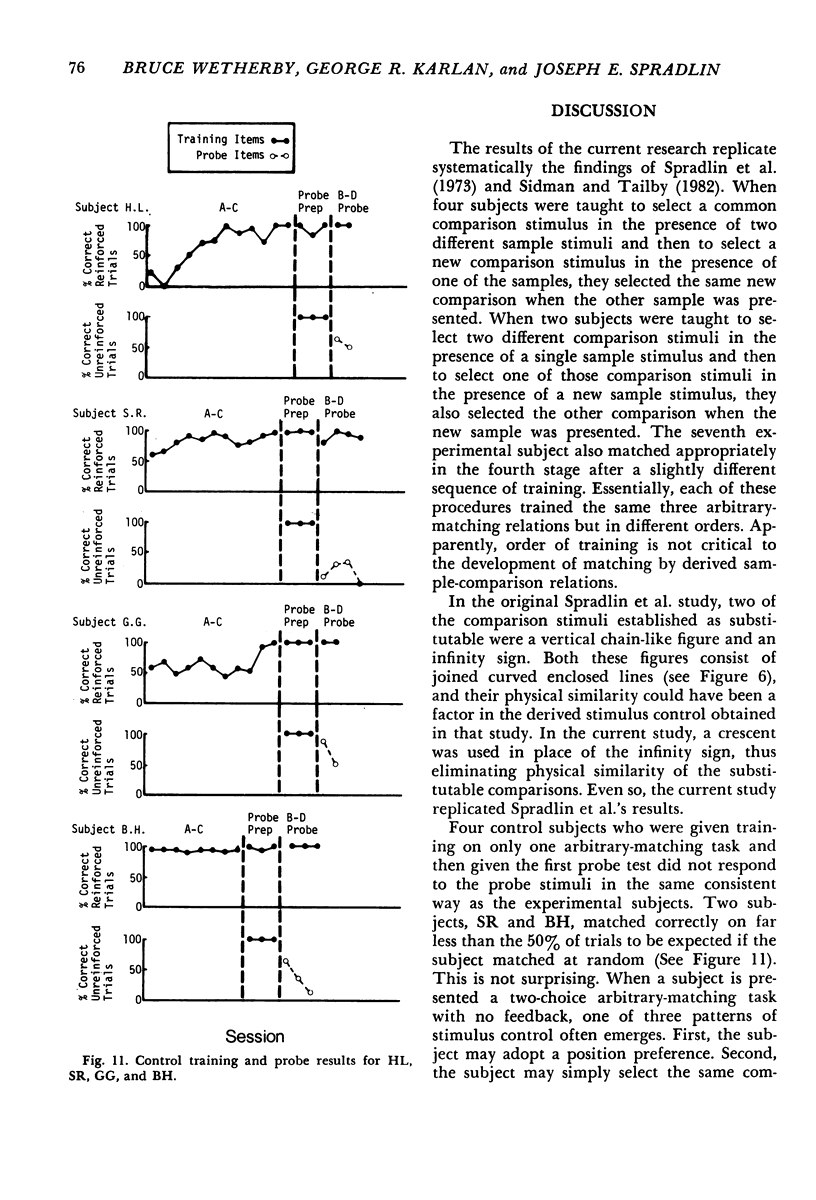
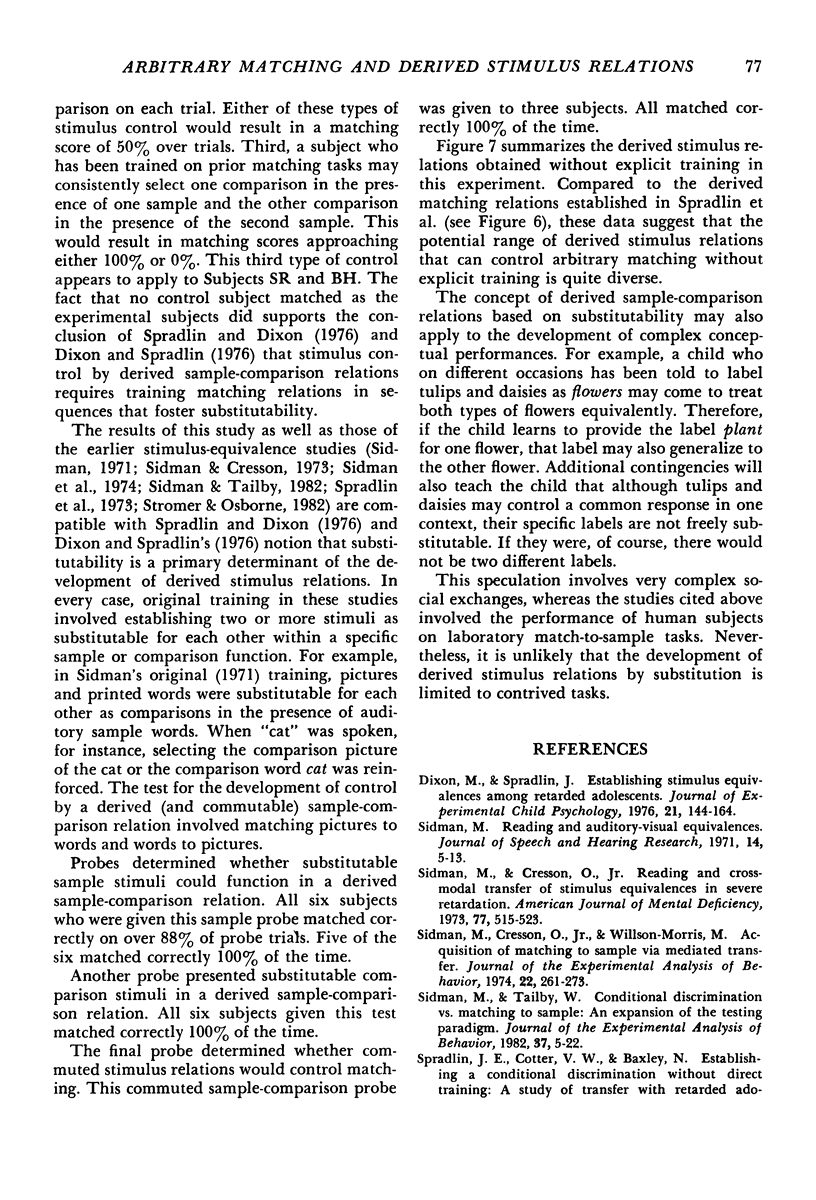
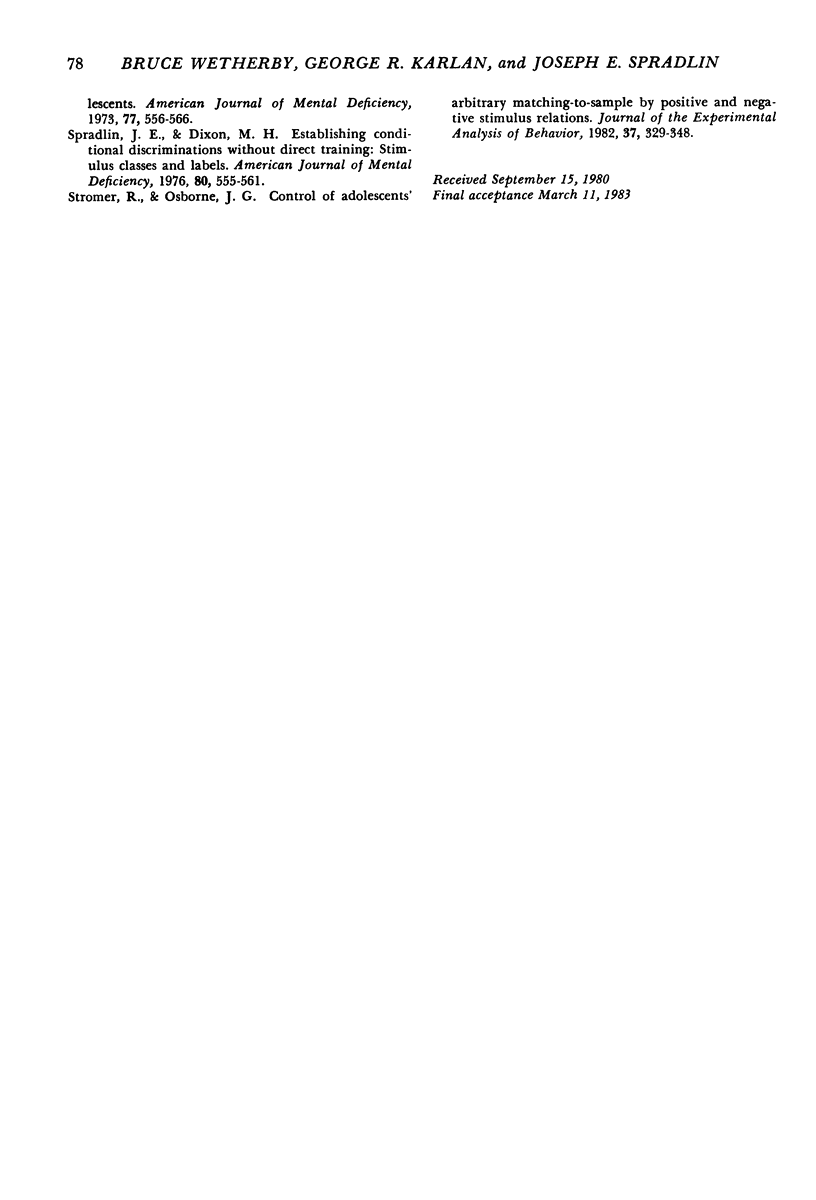
Selected References
These references are in PubMed. This may not be the complete list of references from this article.
- Dixon M., Spradlin J. Establishing stimulus equivalences among retarded adolescents. J Exp Child Psychol. 1976 Feb;21(1):144–164. doi: 10.1016/0022-0965(76)90064-3. [DOI] [PubMed] [Google Scholar]
- Sidman M., Cresson O., Jr Reading and crossmodal transfer of stimulus equivalences in severe retardation. Am J Ment Defic. 1973 Mar;77(5):515–523. [PubMed] [Google Scholar]
- Sidman M., Cresson O., Jr, Willson-Morris M. Acquisition of matching to sample via mediated transfer. J Exp Anal Behav. 1974 Sep;22(2):261–273. doi: 10.1901/jeab.1974.22-261. [DOI] [PMC free article] [PubMed] [Google Scholar]
- Sidman M. Reading and auditory-visual equivalences. J Speech Hear Res. 1971 Mar;14(1):5–13. doi: 10.1044/jshr.1401.05. [DOI] [PubMed] [Google Scholar]
- Sidman M., Tailby W. Conditional discrimination vs. matching to sample: an expansion of the testing paradigm. J Exp Anal Behav. 1982 Jan;37(1):5–22. doi: 10.1901/jeab.1982.37-5. [DOI] [PMC free article] [PubMed] [Google Scholar]
- Spradlin J. E., Cotter V. W., Baxley N. Establishing a conditional discrimination without direct training: a study of transfer with retarded adolescents. Am J Ment Defic. 1973 Mar;77(5):556–566. [PubMed] [Google Scholar]
- Spradlin J. E., Dixon M. H. Establishing conditional discriminations without direct training: stimulus classes and labels. Am J Ment Defic. 1976 Mar;80(5):555–561. [PubMed] [Google Scholar]
- Stromer R., Osborne J. G. Control of adolescents' arbitrary matching-to-sample by positive and negative stimulus relations. J Exp Anal Behav. 1982 May;37(3):329–348. doi: 10.1901/jeab.1982.37-329. [DOI] [PMC free article] [PubMed] [Google Scholar]


